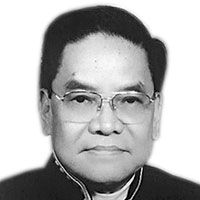For upper GI bleeds physicians still reach for the endoscope

April 25, 2004 | 12:00am
Is endoscopic hemostasis obselete in the era of high-dose proton-pump inhibitors (PPIs)? Without a doubt, no – and yes. The role of endoscopic hemostasis for high-risk upper gastrointestinal (UGI) bleeding is assured, according to experts, while the success of PPIs provides a dependable adjunct for lowering the risk of rebleeding and for treating low-risk lesions. There is still absolutely a need for endoscopic hemostasis for many patients with upper gastrointestinal bleeding. The mechanical approach is undeniably suitable for acute episodes (of bleeding), while PPIs promote rapid healing and prevent the clot from dissolving.
Until someone proves otherwise, that’s how clinicians should use the two approaches. To support claims, one doctor reviewed 11 randomized controlled trials evaluating PPIs for treating UGI bleeding. The evidence showed that the drugs notably decreased rebleeding rates, the need for surgery and mortality – even among some patients with high risk lesions – whether or not endoscopy was used. The question remains whether patients who benefit from PPI therapy alone would experience additional benefits if they underwent endoscopic hemostasis.
Commenting on the presentation that there are "no data to support I.V. acid suppression without the benefit of endoscopic treatment for high-risk lesions", studies showing the benefits of PPI acid suppression were conducted in isolation and lacked an assessment of endoscopy. They have to ask if those patients would have done better with both treatments. While numerous trials have found the superiority of PPIs over placebo, none have pitted PPI therapy alone against PPI therapy plus endoscopy.
"The real issue is the need of a direct comparison." Would predict that the outcomes would be better yet. Such a prospective trial, however, would probably be considered unethical now because endoscopic hemostasis has become standard of care for acute UGI bleeding.
Confirm, locate. assess. Both physicians agreed that patients with suspected bleeding first undergo exploratory endoscopy to confirm, locate and assess the bleeding. Typically, both physicians treat high-risk lesions with therapeutic endoscopic hemostatis followed by intravenous PPIs for 72 hours, followed by oral PPIs for 30 days. Patients with low-risk lesions may be discharged with 30 days of oral PPIs. In cases where endoscopic hemostasis is delayed, IV. acid suppression is recommended up front. Both speakers acknowledged the possibility that PPIs may be overused, but the consequences are probably negligible.
There’s no doubt that PPIs are used a lot. They’re so safe and effective, and many people have heartburn and dyspepsia. Suspect patients reach for them as needed. Added that any cost increases resulting from PPI overuse, either by inpatients or outpatients, pale in comparison to the cost contribution of hospital length to stay. Pharmacists may see overuse of acid suppression as being a major cost factor, but in the big picture, length of stay is far more important.
Until someone proves otherwise, that’s how clinicians should use the two approaches. To support claims, one doctor reviewed 11 randomized controlled trials evaluating PPIs for treating UGI bleeding. The evidence showed that the drugs notably decreased rebleeding rates, the need for surgery and mortality – even among some patients with high risk lesions – whether or not endoscopy was used. The question remains whether patients who benefit from PPI therapy alone would experience additional benefits if they underwent endoscopic hemostasis.
Commenting on the presentation that there are "no data to support I.V. acid suppression without the benefit of endoscopic treatment for high-risk lesions", studies showing the benefits of PPI acid suppression were conducted in isolation and lacked an assessment of endoscopy. They have to ask if those patients would have done better with both treatments. While numerous trials have found the superiority of PPIs over placebo, none have pitted PPI therapy alone against PPI therapy plus endoscopy.
"The real issue is the need of a direct comparison." Would predict that the outcomes would be better yet. Such a prospective trial, however, would probably be considered unethical now because endoscopic hemostasis has become standard of care for acute UGI bleeding.
Confirm, locate. assess. Both physicians agreed that patients with suspected bleeding first undergo exploratory endoscopy to confirm, locate and assess the bleeding. Typically, both physicians treat high-risk lesions with therapeutic endoscopic hemostatis followed by intravenous PPIs for 72 hours, followed by oral PPIs for 30 days. Patients with low-risk lesions may be discharged with 30 days of oral PPIs. In cases where endoscopic hemostasis is delayed, IV. acid suppression is recommended up front. Both speakers acknowledged the possibility that PPIs may be overused, but the consequences are probably negligible.
There’s no doubt that PPIs are used a lot. They’re so safe and effective, and many people have heartburn and dyspepsia. Suspect patients reach for them as needed. Added that any cost increases resulting from PPI overuse, either by inpatients or outpatients, pale in comparison to the cost contribution of hospital length to stay. Pharmacists may see overuse of acid suppression as being a major cost factor, but in the big picture, length of stay is far more important.
BrandSpace Articles
<
>
- Latest
- Trending
Trending
Latest
Trending
Latest
Recommended




























